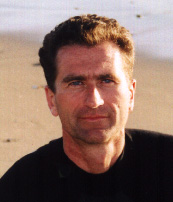Information Foraging Theory
 Peter Pirolli , PARC
Peter Pirolli , PARC
Peter.Pirolli![]() parc.com
parc.com
Seminar on People, Computers,
and Design
Stanford University October 24, 2008
Information Foraging Theory is a theory of human-information interaction that aims to explain and predict how people will best shape themselves to their information environments, and how information environments can best be shaped to people. The approach involves a kind of reverse engineering in which the analyst asks (a) what is the nature of the task and information environments, (b) why is a given system a good solution to the problem, and (c) how is that “ideal” solution realized (approximated) by mechanism. Typically, the key steps in developing a model of information foraging involve: (a) a rational analysis of the task and information environment (often drawing on optimal foraging theory from biology) and (b) a computational production system model of the cognitive structure of task. This talk will provide a survey of models and applications developed within the theory, including recent models of Web surfing, exploratory search, and interaction with information visualizations, as well as outlines of extension of the theory to social information foraging.
![]()
Peter Pirolli is a Research Fellow in the Augmented Social Cognition Area at the Palo Alto Research Center (PARC), where he has been pursuing studies of human information interaction since 1991. Prior to joining PARC, he was an Associate Professor in the School of Education at UC Berkeley. Pirolli received his doctorate in cognitive psychology from Carnegie Mellon University in 1985. He is an elected Fellow of the American Association for the Advancement of Science, the Association for Psychological Science, the National Academy of Education, and the Association for Computing Machinery Computer-Human Interaction Academy. His recent book is titled “Information Foraging Theory: Adaptive Interaction with Information.”.
![]()
View this talk on line at CS547 on Stanford OnLine or using this video link.
Titles and abstracts for previous years are available by year and by speaker.